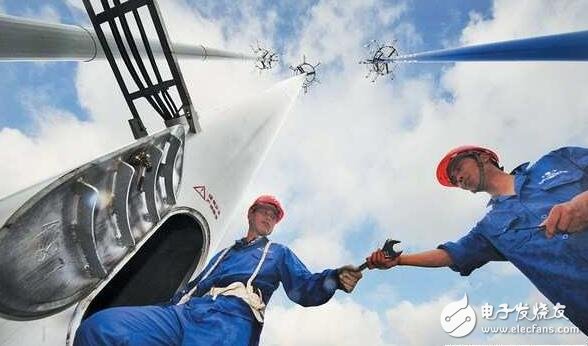5G should be popularized, first solve the following four problems
At present, although the 5G issue has already been heated up, the 5G Alliance believes that the next technological development of 5G will converge more clearly in the four directions. These four directions include: 1. Massive MIMO (massive MIMO) 2. Millimeter wave (mmWave) 3. New modulation technology (new modulaTIon) 4. C-RAN (Cloud-RAN) Pan Jianan, National Instrument Technology Marketing Manager, pointed out that C-RAN refers to the integration of cloud base stations and heterogeneous networks. This will be a later stage in the development of 5G technology. At present, it can be seen that Massive MIMO is the fastest growing, because Massive MIMO mainly focuses on the technology of the base station. As long as the antenna equipment of the base station is increased, the functions of the current LTE, such as beam technology, can be continued. BeamForming), etc., can be implemented like this. As for the activation of millimeter waves, it is because the frequency band below 6 GHz is too crowded, so that the industry needs to go up and provide more bandwidth through the new frequency band for larger data transmission. The millimeter wave also becomes 5G. The market is a battleground. After the millimeter wave, the new modulation technology will redefine the architecture of the physical layer, and then coordinate through the C-RAN specification on the physical layer to optimize the entire network. Therefore, the development of C-RAN will be a clear direction after the new physical layer modulation technology is set. At this stage of observation, C-RAN has already begun to conduct research, but it is more in the form of simulation, or is constructed under the current LTE network architecture. Overall, C-RAN research really needs to be applied to 5G communication, and it seems that it needs a little more time to brew. Figure 1: Massive MIMO is a technology focused on base stations Development of 5G frequency band Looking at the current millimeter wave, there are so many different frequency bands, but which band is most suitable for 5G transmission? Although 60GHz seems to be a good frequency band, there is no further standard determination. Observing Taiwan, Japan, and South Korea at present, the current frequency bands of 28GHz and 38GHz are the main frequency bands. Pan Jianan pointed out that one of the most important reasons is that the result of Channel Sounding at 60 GHz proved to be the most severe frequency band in the rain. In the 60 GHz band, the most fear of rain and moisture will cause the signal to decay rapidly. The frequency band of the millimeter wave is actually related to the military channel or satellite TV signal that is originally in use in the country or city. For example, in Europe and the United States, frequently used satellite TV signals are used in such frequencies as 28 and 38 GHz. In Asia, the use of satellite TV is also less, and 28, 38 GHz is now widely used in the development of 5G. As for the frequency band above 70 GHz, since most of them have been used for military purposes, they are less likely to cross the field. In the development stage of 5G, the first goal is to set aside in 2020, the relevant units hope to have the experimental network to start the actual test in the 2020 Tokyo Olympics. At the venue of the Tokyo Olympics, it is possible to actually measure the 5G high-speed network under the conditions of so many users. Figure 2: 5G hopes to launch actual system testing at the 2020 Tokyo Olympics New service type Chen Daqing, general manager of Alifecom, said that the main purpose of developing 5G communication is to make wireless transmission faster and to make the system more stable. The goal is to achieve thousands of system capacity, 100 times transfer rate, a large number of connected devices, and to be able to balance energy saving and low power consumption, as well as lower system cost. What is the biggest difference between the development of 5G communication and the past? In fact, from 3G to 4G, the biggest change is that the speed is faster, the bandwidth is larger, and the introduction of smart phones is also leading. However, what 5G has to do, in addition to continuing the higher bandwidth and faster speed, will focus on higher system integration. The main purpose of developing 5G is to make wireless transmission faster and system stable. It is also necessary to balance energy saving with low power consumption and lower cost. Looking back on this road from 3G to 4G in the past, due to the uncertainty of the standard, Taiwan has also miscalculated the treasure and lost a WiMAX. However, the road to 5G is actually very obvious, which is an extension of LTE technology. The next point is how to integrate more service types into the same standard and provide service support through wireless. This is the key point of 5G development. Therefore, if the focus of 5G development is on the service layer and the application layer, the technical proportion of the physical layer and the communication layer is not so heavy. Chen Daqing believes that 5G will let the relevant manufacturers have to pay attention to another level of problems. If you compare wireless communication to a highway, when 5G technology makes the road more spacious, more cars will be on the highway at the same time. It should be noted that some of these cars are fire trucks, some are ambulances, some are sports cars, some are general family cars, some are large trucks, and some are passenger cars. The characteristics and needs of these cars vary. For example, a truck with a large tonnage can be opened slowly without rushing, as long as it can reach the destination on time. But the ambulance needs to arrive at the scene of the accident quickly, and other cars must give way to make it go first. The demand for sports cars and cars is also different. Through the metaphor of the expressway, returning to 5G communication, you will find different application services, and the required communication priorities will be different. Some require faster and faster communication services, some are low-cost and slow-speed services are sufficient, some require very power-saving, and some require high reliability and stability. Because of the different types of services, the demand for the Internet is also very different. How will these different service types be integrated on a small 5G phone? This is a problem that needs to be considered in the face of 5G. Therefore, 5G communication can't just provide a faster network service, but provide a more comprehensive, full service type, and must run smoothly. Zeroing into a whole, comprehensive integration, this is the focus of 5G development. Also because the coverage level is too complicated, the time course of 5G development will be delayed more than we imagined. Figure 3: 5G is like a highway, and different applications are like different cars. Figure 4: 5G Communications will focus on the integration of more services and systems. Thinking from the terminal needs Xu Hengyang, vice president of software engineering at Alifecom, believes that in the era of 2G and 3G, the leading standards were all chip vendors, otherwise they were network equipment vendors. Nothing is coming from telecom operators. But with the rise of the mobile services industry, telecom operators are playing an increasingly important role. The role they play is somewhat similar to a large end user. From the perspective of their operators, because of the need to provide more services, there are also many different thinking and new requirements for communication. In the face of the rise of 5G, they are even more convinced that they cannot be absent. Therefore, these operators have gradually formed an alliance and hope to influence the formulation of standards. In the future, 5G communication will focus on the integration of more services and systems. Therefore, it must be considered from the perspective of the end user to meet the real market demand. Figure 5: Thinking from the perspective of the end user can make 5G meet the real market needs. Product features: Generator TR GFCI UL,Ground Fault Circuit Interrupter TR,Generator TR GFCI UL outlet,Ground Fault Circuit Interrupter TR outlet Hoojet Electric Appliance Co.,Ltd , https://www.hoojetgfci.com




â– Good heat dissipation
--Blade design of copper alloy contacts,good conductivity
â– Super high impact resistance and thermal stability
--Cover pans are made of high quality polycarbonate
â– Chemical corrosion resistance
-- Fingerprint-resistant zinc plated mounting brackets
â– Grounding
--One-piece grounding design,No Load-Weather resistance